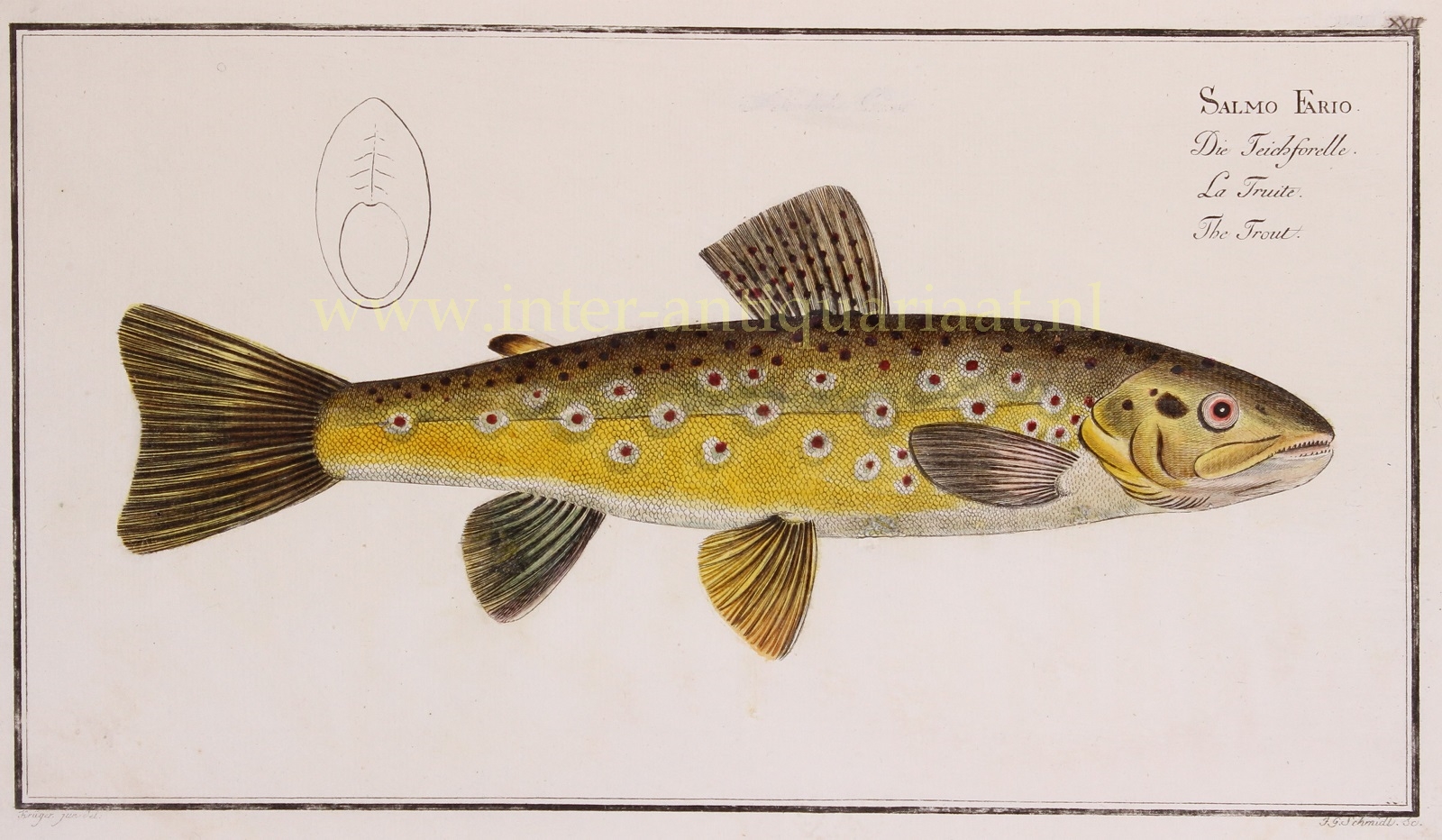THE BROWN TROUT
“Salmo Fario/Die Teichforelle/La Truite/The Trout” (plate 22), copper engraving made by Ludwig Schmidt after the drawing of Krüger jr, for Markus Elieser Bloch’s “Allgemeine Naturgeschichte der Fische” published in Berlin between 1782 and 1795. With original hand colouring. Size: 19 x 38 cm.
Bloch’s work on the “Allgemeine Naturgeschichte der Fische” occupied a considerable portion of his life, and is considered to have laid the foundations of the science of ichthyology. The publication was encouraged by a large subscription, and it passed rapidly through five editions in German and in French. Bloch made little or no alteration in the systematic arrangement of Peter Artedi and Carl Linnaeus, although he was disposed to introduce into the classification some modifications depending on the structure of the gills. To the number of genera before established, he found it necessary to add nineteen new ones, and he described 276 species new to science, many of them inhabitants of the remotest parts of the ocean, and by the brilliancy of their colours, or the singularity of their forms, as much objects of popular admiration as of scientific curiosity.
Bloch is considered the most important ichthyologist of the 18th century.
The Salmo fario, also known as the brown trout, is a species of freshwater fish belonging to the family Salmonidae, which also includes salmon and char. It is native to Europe and is commonly found in freshwater environments such as rivers, lakes, and streams. The brown trout is a predatory fish that feeds on a variety of small organisms such as insects, crustaceans, and small fish. It typically grows to around 30-50 centimeters in length and can weigh up to 2 kilograms. The brown trout is a popular sport fish species for anglers, and is also valued for its meat, which is considered to be high-quality and is often used in dishes such as grilled trout and trout chowder.
Price: SOLD


